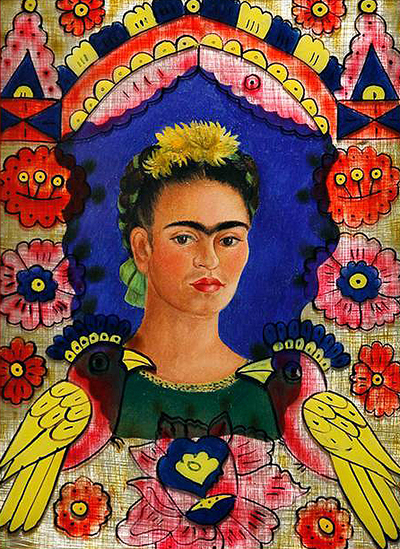The painting from Frida Kahlo was to be her first sale from a high profile French exhibition of 1939. It was purchased by the French state for display at The Louvre and marked her arrival as an artist in Europe. This continent had provided her with considerable influence during her lifetime and so, in a way, this completed a loop between Mexico and the continent from where much of her family's roots came from. It was also particularly rare for the Louvre to invest in a Mexican artist, of any era.
Despite the artist's worldwide popularity within the modern era, The Frame is the only painting from her career that can be found in a European museum, at the time of writing. It was a part of her Paris exhbition which attempted to introduce her inventive work to a whole new audience for the first time. The exhibition was titled "Mexique" and was devoted to the country of her birth, displaying a variety of mediums including paintings, sculpture and photography. This event was not to prove particularly fruitful to the female painter but her one sale did hold a particularly important symbolic value, particularly considering the high profile identity of the buyer.
Frida Kahlo repurposed a purchase from a market in Oaxaca, Mexico which had likely been intended for use as a mirror or photograph holder. The self portrait was painted over an aluminium sheet, before sliding it into its new home. The original creator of the glass cover could not have believed that their simple product could become a part of one of the most famous 20th century paintings.
Frida would always depict herself in the same manner, regardless of her particular emotions at that time. She would portray herself as serious and formidable, disguising the personal anguish which she had suffered for much of her life. The painted surround in this work provides the title of ‘The Frame’ and it is this touch which bat differentiates it from her other self-portraits.
Mexican art has long used certain items such as flowers and birds as recurring themes and these were added to the frame of this work. The bright colours suit her own typical colour palette and further help to portray an outward beauty and almost festive celebration. In the portrait, Kahlo places a single flower on her head along with a simple ribbon.
Since it’s completion in 1938, and sale a year later, the artwork has slowly changed in condition, with the floral design work on above the portrait slowly fading. Over time more and more of Frida’s self portrait has begun to emerge from behind the frame. This has given an almost organic nature to this piece. It can be considered one of Frida Kahlo's most famous paintings, alongside the likes of The Broken Column, The Two Fridas and The Wounded Deer.

